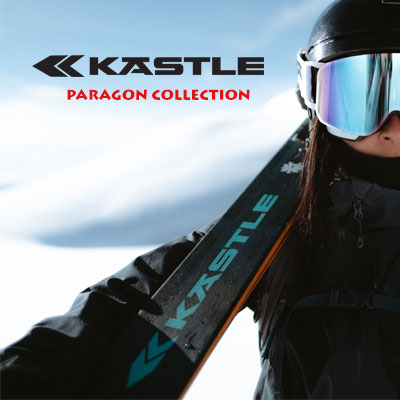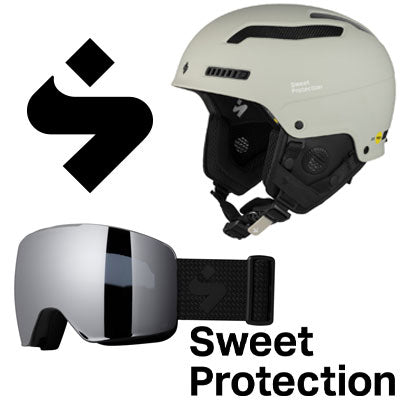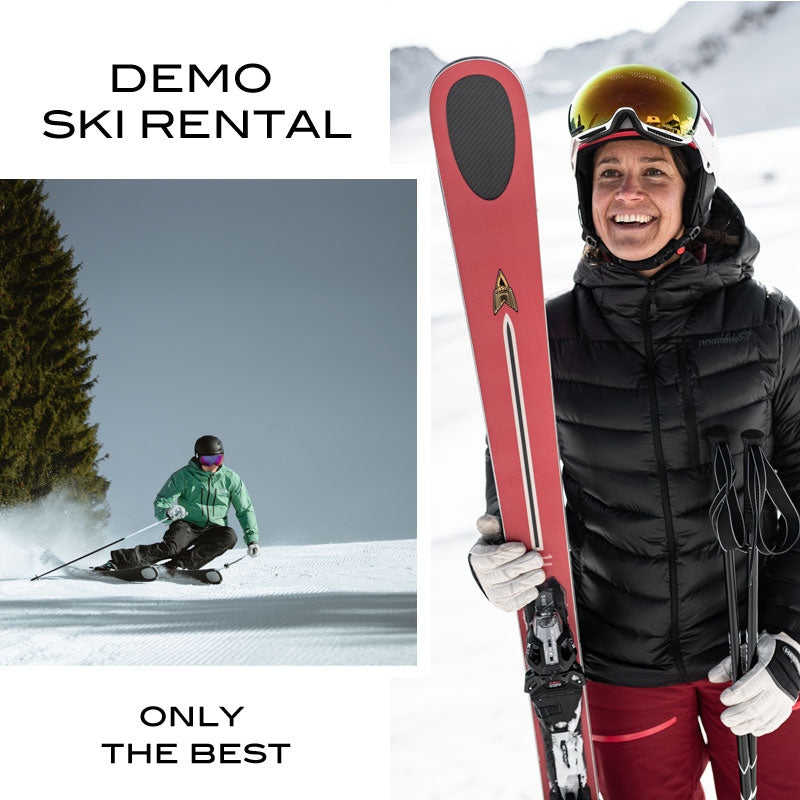Alpine Touring, Uphilling & Backcountry Skiing in Aspen
Three Ways to Go Ski Uphill
The fastest-growing segment of the ski industry isn’t the downhill — it’s the uphill. In Aspen, skiers embrace multiple ways to climb under their own power:
- Uphilling: Ski touring within the Aspen Snowmass resorts. Requires a pass and follows designated uphill routes on all four ski areas. Think of it as the fitness side of skinning — you earn your turns inbounds on controlled terrain.
- Backcountry Skiing: Outside the ski areas in unmanaged terrain. Requires avalanche gear, training, and experience. Here, the focus is skiing untracked powder and exploring remote lines.
- Alpine Touring (AT): Lightweight gear designed more for covering ground than for big descents. Think long traverses or multi-day tours where efficiency is everything.
Each uses similar equipment — touring boots, bindings that free the heel for climbing, lightweight skis, and climbing skins — but the objectives are different.

Uphilling on Aspen Snowmass
Aspen Snowmass has embraced uphill culture, with designated routes on all four ski areas. An uphill pass is required (season or day pass), but once you have it, you can access some of the best fitness skiing in Colorado.
- Buttermilk: The most popular choice, with designated routes up both Main and West Buttermilk. Shorter vertical gain and peaceful terrain make it approachable. Free parking adds to the appeal.
- Aspen Highlands: A challenging climb with routes weaving across the mountain. For elite athletes, the full “Creek to Peak” climb from the base of Maroon Creek to the top of Highlands Bowl gains over 3,000 vertical feet.
- Snowmass: A friendlier uphill option with long, steady climbs and stunning views.
- Aspen Mountain: More limited due to terrain layout. Skinning is only allowed before 9:00 a.m. (above Chair 3) or after lifts close. Evening uphills with a headlamp — or on full-moon nights without one — are a local tradition.
Backcountry Skiing
For those who venture beyond resort boundaries, Aspen offers legendary backcountry terrain — but also serious risk. Avalanches, variable snow, and remote access make this discipline one for experts only. Standard gear includes:
Beacon, shovel, probe
Avalanche airbag pack (recommended)
Wider skis with touring bindings for flotation and control
Classic zones like Richmond Ridge, Independence Pass (spring only), and the backside of Aspen Highlands reward those with the skills and knowledge to travel safely. Always check avalanche conditions through the Colorado Avalanche Information Center (CAIC) before heading out.

Alpine Touring (AT)
AT skiing is about efficiency — covering ground with light gear, often on narrower skis, and sacrificing downhill performance for uphill speed. This style is common in multi-day traverses or long tours where the objective is mileage, not powder turns. In Aspen, AT setups are popular for those training for endurance events or linking long tours across the Elk Mountains.
The 10th Mountain Hut System: Backcountry Skiing at Its Finest
One of the most rewarding ways to experience Aspen’s backcountry is through the 10th Mountain Division Hut System. Stretching across central Colorado, this network of rustic huts is a tribute to the 10th Mountain Division soldiers who trained in these mountains during World War II. Today, the huts offer skiers and riders the chance to venture deep into the Rockies with a warm, welcoming base waiting at the end of each day.
For AT skiers, the hut system is the ultimate blend of challenge and reward. Long approaches through snowy valleys, climbs over alpine passes, and descents into remote basins are all part of the journey. Nights are spent sharing stories over the wood stove, melting snow for water, and waking up to untouched lines right outside the door.
With many trailheads located just a short drive from Aspen, hut trips can be single-night adventures or multi-day traverses linking several huts together. It’s the perfect way to combine ski touring, camaraderie, and a true immersion into the backcountry.
SkiMo Racing & Signature Events
Aspen has become a hub for SkiMo racing, where uphill athletes test their endurance and efficiency in Lycra-clad competition.
Frequent Highlands Races: Weeknight races with multiple ups and downs across Highlands — grassroots, fun, and tough.
Power of Four: One of the premier races in North America, covering all four Aspen Snowmass ski areas in a single day. The course features over 10,000 feet of climbing, Highlands Bowl, and the notorious Congo Trail descent. Only the strongest finish smiling.
Grand Traverse: A world-class point-to-point race from Crested Butte to Aspen. Spanning 40 miles overnight, this team race is legendary for its endurance demands and unpredictable conditions. For Aspen locals, skiing “home” is the ultimate advantage.
Gear & Skins
Getting set up properly is essential:
- Boots: AT boots are lightweight, with a walk mode and tech fittings for touring bindings.
- Bindings: Lock the heel down for skiing, release for climbing. Minimalist “tech” bindings save weight.
- Skis: Choose light and narrow for uphill training and AT traverses; wider and more powerful for backcountry powder.
- Skins: Modern synthetic skins clip to the ski tip and tail, with directional fibers and adhesive to grip uphill but glide forward.
- At Miller Sports, our dedicated AT wall features a curated selection of skis, boots, and skins. Whether you’re getting into resort uphilling for fitness or preparing for the Power of Four, we’ll match you to the right setup so you can move efficiently and ski confidently.
Local Secrets
Best Beginner Route: West Buttermilk, mellow grades and quiet slopes.
Evening Tradition: Skinning up Aspen Mountain after work with a headlamp.
Creek to Peak Challenge: Highlands to the top of the Bowl in one push — the ultimate local sufferfest.
Full-Moon Magic: On clear nights, the snow reflects so much light that you can ski without a lamp.

Crazy & Colturi: Perfect for AT, Backcountry, and Uphill Skiing
When it comes to ski touring and uphilling in Aspen, the right clothing makes all the difference. Crazy and Colturi are two brands built with this exact pursuit in mind. Both were born in the Alps, where uphill skiing is part of everyday mountain culture, and they’ve become leaders in technical apparel for endurance-focused skiers.
Crazy is known for ultra-lightweight, breathable layers that wick away moisture during the climb yet offer warmth and weather protection on the descent. Colturi shares the same DNA, blending sleek European design with high-performance fabrics that flex with every stride. Together, they deliver a system that feels streamlined while skinning, ventilates during the push uphill, and protects you when it’s time to rip skins and ski down.
Whether you’re logging laps before work on Aspen Mountain, exploring the backcountry, or taking on a full-day adventure, Crazy and Colturi provide the comfort, mobility, and performance you need. For skiers who love the uphill as much as the downhill, these brands are the perfect match.




